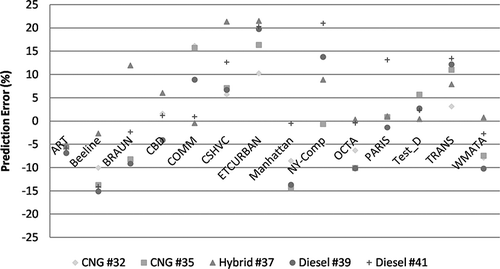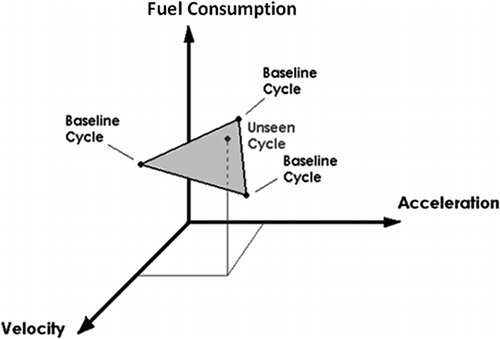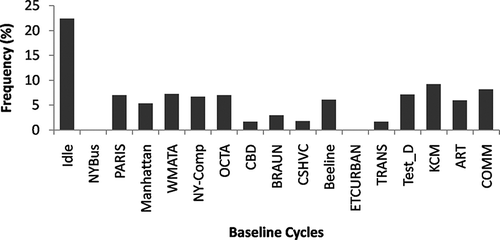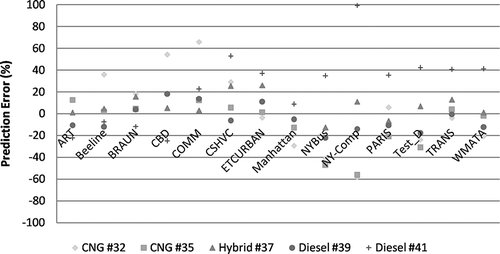Figures & data
Table 1. Transit buses analyzed in this research
Table 2. Average measured properties over five buses for 17 cycles used
Table 3. CO2 mass rate prediction results with lowest average percent error
Table 4. Fuel economy predictions with lowest average percent error
Figure 3. CO2 mass rate predictions with lowest error for (a) CNG bus 32, (b) CNG bus 35, (c) hybrid bus 37, (d) diesel bus 39, and (e) diesel bus 41.
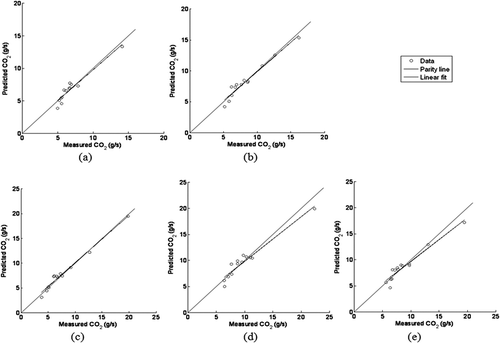
Table 5. Baseline combinations with lower average percentage error for CO2 (g/sec) prediction
Figure 5. Parity plot for prediction of CO2 mass rate using idle, OCTA, and KCM as baseline cycles and velocity and acceleration as metrics.
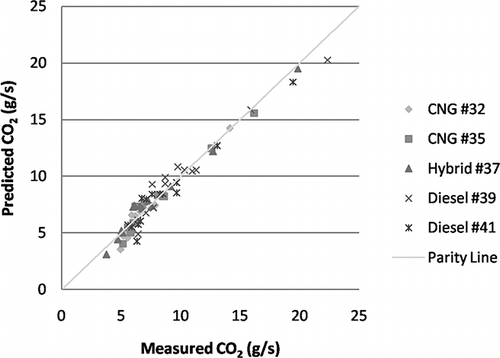
Figure 6. CO2 mass rate prediction errors using idle, OCTA, and KCM as baseline cycles and average velocity and average acceleration as metrics.
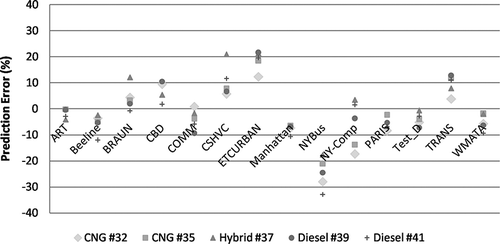
Figure 7. Percentage error ratios when using other metrics combinations. V = velocity, A = acceleration, Std.V = standard deviation of speed, Stops = stops per unit distance, IP = inertial power.
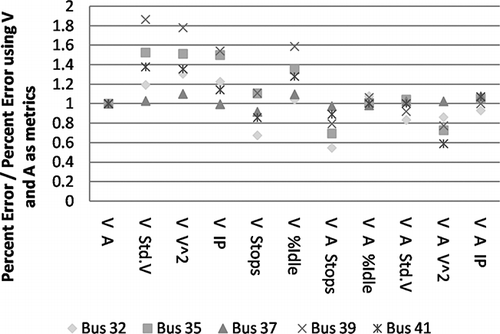
Table 6. CO2 mass rate prediction results with lowest average percentage error
Figure 8. Parity plot for prediction of CO2 mass rate using idle, NYBus, and KCM as baseline cycles and velocity and stops per distance as metrics.
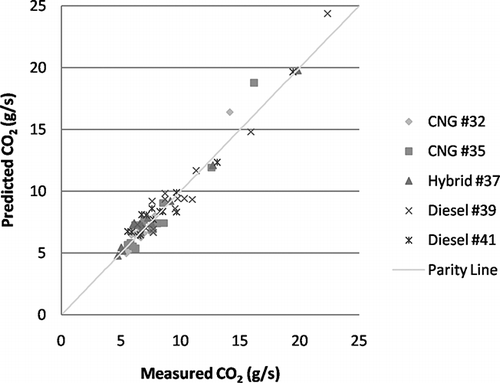
Figure 9. CO2 mass rate prediction errors using idle, NYBus, and KCM as baseline cycles and average velocity and stops per distance as metrics.
